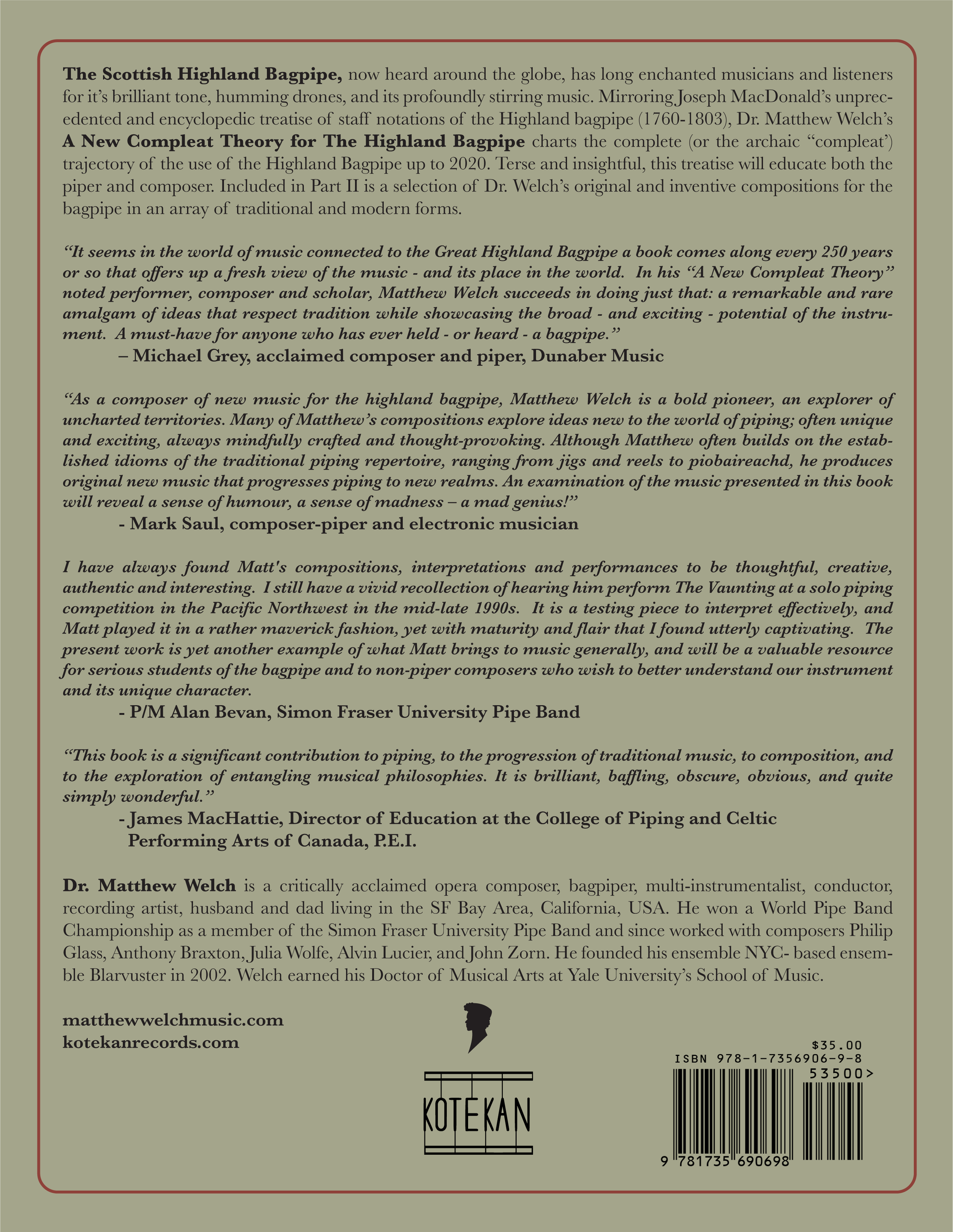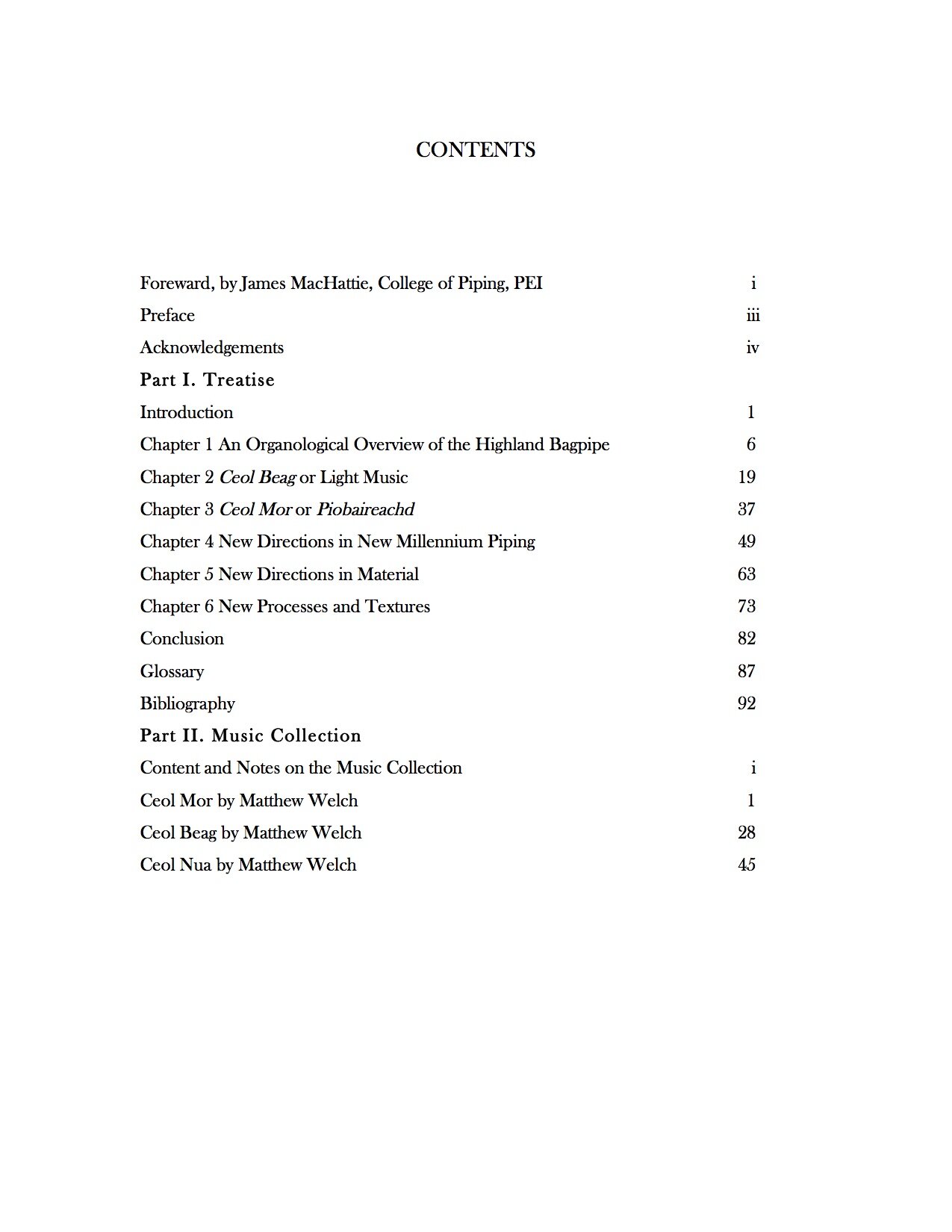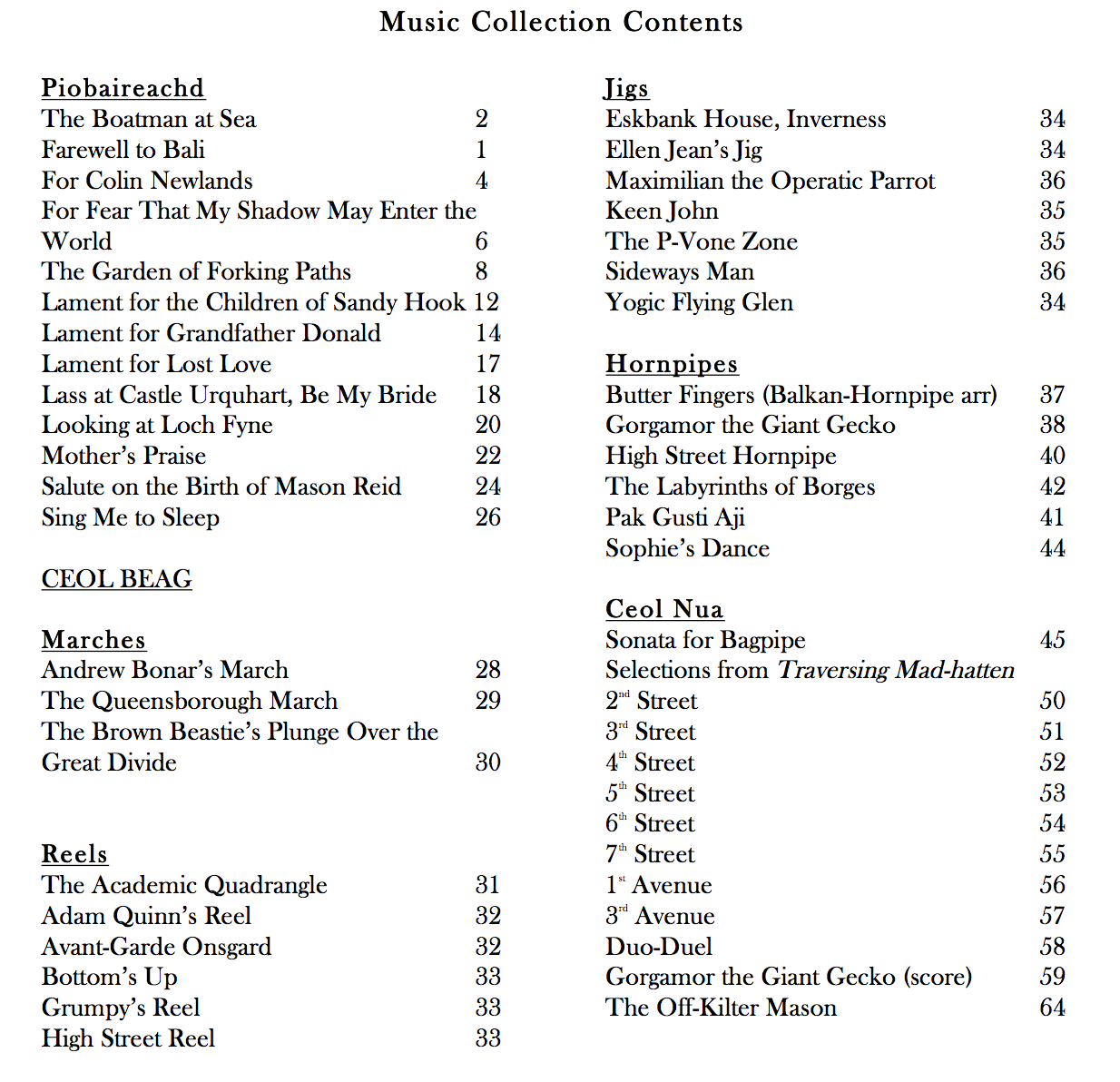“a composer possessed of both rich imagination and the skill to bring his fancies to life”
NOW AVAILABLE!! A New Compleat Theory for the Highland Bagpipe, by Dr. Matthew Welch
“A must-have for anyone who has ever held - or heard - a bagpipe”




Matthew featured on Philip Glass’s #glassminute
"Einstein on the Pipes," for today's #glassminute, bagpiper Matthew Welch plays Trial Part 1 from "Einstein on the Beach." Last year, Matthew released his re...
Tomorrow’s Memories
a Little Manila Diary
an opera by Matthew Welch
for
The San Francisco Girls Chorus
libretto adapted by Matthew Welch
based on
Tomorrow’s Memories: A Diary, 1924-1928 by Angeles Monrayo,
edited by Rizaline R. Raymundo, (University of Hawai’i Press)
Scene 1: The Strike Camp
San Francisco Girls Chorus
Valérie Sainte-Agathe, Artistic Director
Hannah Gonzales, Angeles Monrayo
Florante Aguilar, guitar
Patti Kilroy, violin
Levy Lorenzo, cajón
Sean San José, stage director
Joan Osato, video designer
New Art Media, video design and production
New Art Media, audio engineering and mix
Thayer N. Walker/Lowdownhaus, video graphics
Additional Music / Sound Design Joan Osato
Ilang-Ilang by Luz Morales from Folk Songs of the Philippines, Smithsonian Folkways
Images from the Filipino American National Historical Society Museum, Stockton, CA
Footage care of the US National Archives, The Ford Library Ford Motor Company Collection, ca. 1903 - ca. 1954, Production Date: 1924
Director’s Dedication to the Memory, History and Heart of Dr. Dawn Bohulano Mabalon
“Tomorrow’s Memories” is a choral-opera for SFGC and takes its name from the published diary of Filipina-American Angeles Monrayo (her diary spans from 1924-1928). The opera pulls a thread from of her eloquent personal reflections and anecdotes to fashion a young woman’s coming-of-age story and tale of immigration to the US from the Philippines during the American-Philippine Colonial Era. Angeles is a lover of song and music which represents her life’s range, from her native birthplace in Romblon in the Visaya’s, through her stay in Hawaii, and eventual settling in Stockton, California, in a neighborhood known then as Little Manila. Her tale is set as a metaphor for the unique cultural forming of Philippine-American diaspora and also as a mirror held up to our current socio-political issues of equality in immigration, labor, gender, and culture.
In the first scene presented here, Angeles Monrayo arrives with her family at a Hawaiian Strike Camp in 1924, where a multitude of recently blacklisted Filipino sugar-cane workers (sakadas) have come to dwell together, some with families. Angeles recounts the liveliness and camaraderie of the Filipinos despite their many first-time encounters with speakers of unfamiliar Filipino languages such as Ilocano, Tagalog and Visayan. Angeles also tells of Pablo Manlapit’s (The first Filipino-American lawyer in Hawaii) championing labor equality—principles of which we hear when the crowd practices protest chants to the abolitionist and pro-union tune “John Brown’s Body.” The chorus sonically mimic the plucked strings of the Philippine Rondalla ensemble, referencing prior Spanish colonial influence, mixed with 1920s US Tin-Pan Alley harmony. Accompanying the chorus is a trio of violin, guitar and cajón, imagined as an impromptu band from the crowd staying in the Strike Camp. — Matthew Welch, June 2020
Up Next
MEDIA
IMAGES
STREAM
Soundcloud
FOLLOW
-
SF bay area Percussion Quartets? Still new here 😆
-
RT @Expinopera: "Six different composers—@JasonCady, Paula Matthusen, Erin Rogers , @apsiege, @shelleyplaysaxy and @MatthewTWelch—s… https://t.co/aV3Vqo8TpN
-
Blarvuster tracks in this classic New Sounds - “Gamelan Plus” - RIP Barbara Benary https://t.co/eWV4o68fck













